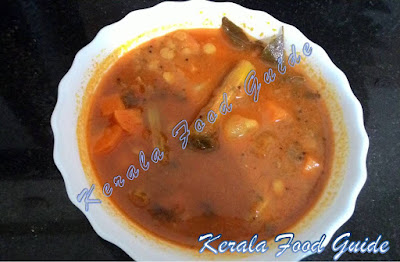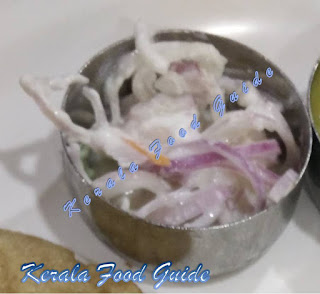If you have never experienced South Indian and especially Kerala’s cuisine, this article is where you should start. It should give you a good idea about the kind of things you can expect to get and describes them as best as possible with comparisons to other dishes from around the world to give a better idea of the dish in question. We will also try our best to provide allergen information about each dish. Dishes you encounter may vary from restaurant to restaurant but this article lists the main ones you will encounter. My Indian friends are also welcome to read it too, if only to get a few laughs out of my attempts to explain these diverse, complicated yet authentic dishes!
Note/Disclaimer: Some of these dishes are neither gluten free, nor suitable for those who are lactose intolerant. Our recommendations are based on knowledge of the original recipe of these dishes and the ingredients that go into them. When being prepared in a restaurant setting however, it is not easy to ensure that some ingredients are not crossed between dishes. Thus, people with any food intolerance may still want to be careful even though you may not see ingredients that may harm you listed here. A vast majority of the dishes you see here are vegetarian and many of them are vegan too, depending on the definition.
We do not assume liability for any adverse reactions that may occur due to the consumption of these dishes.
When in doubt, confirm with the people serving you; it is better to be safe than sorry.
Dosa [Crisp Rice and Lentil Crepes]
Note: This is just a brief description, if you want to know more about dosas including rather intricate details about how they are made, we have written a detailed article exclusively about dosas! [link coming soon.]
Dosa is one of the most well-known South Indian foods, so much so that it has pretty much become synonymous with ‘South Indian’. When I was studying in the North, restaurants would claim to have South Indian food and the only such thing on the menu would be the dosa(s)!
In its essence, it is a kind of thin pancake or crepe made with fermented rice flour and legume dough. Don’t get worried: the fermentation is very light and usually does not leave a noticeably strong flavour at all, though this may not always be the case. There are many variations and incarnations of the same too. The dosas you will find in Kerala are generally thin, whitish in colour and rather crisp. They are also usually flipped and cooked on both sides. The dosas found in other states like Tamil Nadu etc. are thicker, of a darker outer colour and have a mixed texture, being crisp on the outside and softer on the inside. This is owing to it being thicker while cooked only on one side, apart from using slightly different ingredients too.
There are many fillings possible but the most common is the masala dosa. They are most commonly eaten with sambhar and/or coconut chutney [both described below!]. Dosas can also be had as a crunchy snack with minimal accompaniments; sometimes with a blob of butter and chutney powder and some kids like to have it with butter and sugar. Dosas are primarily a vegetarian food but you may find some restaurants offering ones with egg and even chicken or other meats. There are a few restaurants dedicated exclusively to dosas and feature several different types of dosas too. Most restaurants usually offer a few varieties of dosa at least, the most common of which are discussed below.
The rava dosa is a popular variant of the dosa, it has semolina (rava) added to the batter in order to make it have a more substantial texture. Not gluten friendly.
The above onion rava dosa demonstrates the expected characteristics being thin and crispy and also served rustically on a banana leaf. It has chopped onion and green chilies added for spice!
It must have right amount of crispiness and the texture of the rava/semolina should be present but must never feel too grainy. There are a few variations of rava dosa including the aforementioned onion rava dosa too.
Paper roast
As the name suggests, this dosa is paper thin and crispy. It is usually rather big too. If you want to be a bit more indulgent and are not counting the calories or saturated fats, you could consider going for the ghee roast or butter roast instead.
Ghee/butter Roast
Light and crisp with a rich taste owing to the use of ghee or butter, this dosa is great if you want something tasty but not heavy or filling as a masala dosa. It basically uses the same batter as the regular/plain dosa.
It ends up being nice and golden brown and has a crisp texture and hold its shape as seen in the picture above. You must be willing to stop worrying about the fat though! Gluten friendly in most cases unless it comes into contact with semolina that may be used for other dishes in a restaurant setting but may not be lactose free: especially for butter dosa and ghee dosa may still contain trace quantities of lactose depending on the quality of ghee used.
Masala Dosa
The all-time favourite, it has a potato filling adding a dose of healthy carbohydrates and is spiced with chilli, turmeric, onion, curry leaves and so on. Thus, it is quite a filling meal. Gluten and lactose free in most cases unless butter or ghee is used for roasting, an unlikely case and would usually be described as such if it did [butter masala dosa]. Restaurants may prepare it one the same griddle used to make rava [semolina] dosa so this may be a problem.
Mysore Masala Dosa
A characteristic Udupi variation of the masala dosa. The traditional Mysore Masala Dosa is easily recognized by its thickness yet crisp and soft textures at the bottom and top respectively. The outside should be a darker shade of brown. The other most defining characteristic is that a red chutney of red chili, chickpea and garlic must be spread on the suface of the dosa before adding the quintessential potato masala. It is the addition of this chutney that gives it a really unique flavour and separates it from other types of Dosa. We have not encountered an authentic Mysore Masala Dosa anywhere in Kochi so far, but have mentioned it here anyway in the interests of being comprehensive.
Onion Dosa
This one is for the onion lovers: the usual dosa with finely chopped onion and salt sprinkled on it while cooking [refer photo above, under Rava Dosa]. Sometimes black pepper or red chili powder are added too. This variation is available for rava dosas too. Unless you actually like raw onions, you may want to tell the waiter to ensure the onion is cooked well while placing your order. If done right, the onions become a bit brown and have a slightly sweet taste owing to being caramelised.
Plain onion dosa should be gluten and lactose free in most cases unless it comes into contact with semolina that may be used for other dishes in a restaurant setting.
Idli [Steamed Plain Rice Cake]
Fun fact: Idli is made using the same fermented rice and legume batter as dosa.
The difference is in the preparation: dosas are spread out like pancakes or crepes and lightly roasted on a pan while idlis are steamed in shallow molds [refer photo above] which make them soft and spongy.
On their own, they are rather bland and lack any interesting textural variation so it is best had with side dishes.
Allergen Information
Based on the ingredients, this is one of the dishes that are suitable for those who are gluten or lactose intolerant but don’t rely on that alone.
Uthappam [Savoury Rice Pancake]
Uthappam is like a real cross between an idli and a dosa, or just a thick dosa. It is made by scooping a ladleful of dosa batter but not allowing it to spread much, and putting toppings on it. The common toppings may be onion, tomato, carrot, green chili, pepper etc. It is slightly crisp on the bottom where it contacts the pan and soft on top.
Allergen Information
Based on the ingredients, this is another dish that is suitable for those who are gluten or lactose intolerant but don’t rely on that alone.
Vellayappam [Crisp-crepe, soft-pancake hybrid...!]
I myself can't stop laughing while I'm writing that short description above in the square brackets: Vellayappam is an extremely unique dish; there is nothing it can be compared to. It is sort of like a combination of two things: an outer lace akin to a crisp crepe and a centre that is thick and soft like a (very thick) Pancake. Here's a photo to give you a clearer idea:

It has a very unique flavor owing to being fermented and some recipes call for the use of an alcoholic beverage that goes by the name of 'toddy', which is derived from coconut palms. This gives it a different flavor altogether: it gives a slightly sweet and sour tone to the batter. It is difficult to find this latter variety however, as most of them use other methods of fermentation, yeast being the most common. Vellayappam is meant to be eaten with other curries or stews. It is a great accompaniment to anything spicy curries or mild stews, vegetarian or non-vegetarian dishes. Most definitely gluten friendly, but may not be lactose free. When I was a very young kid, I used to have them with milk or coconut milk and a sprinkling of sugar for sweetness and crunchiness; this is another popular way of consuming this dish among kids!
Allergen Information
Based on the ingredients, this dish is suitable for those who are gluten or lactose intolerant but adding other ingredients may change that. Only regular yeast [not brewer's yeast] is used so it should be gluten free. The most common accompaniment: stew, can be made with milk so be wary of that if you have allergies.
Idiyappam [Rice String Hoppers!]
This is a typical Kerala dish that involves dough made of fine rice flour extruded through a special implement to create extremely fine strings made into a flat circular cake.
It is a bit like noodle but thin as a string of cloth or very fine vermicelli. This is then steamed and served hot. It should be very fine in texture.
Being a steamed dish, it is very healthy. It is neutral in taste and goes well with the spicier curries or mild stews too, both vegetarian and non-vegetarian. Most definitely gluten and lactose free.
Like vellayappam, I sometimes used to have it with milk and a sprinkling of sweet and crunchy sugar when I was really small!
Allergen Information
Based on the ingredients, this is a dish that is suitable for those who are gluten or lactose intolerant, even in a restaurant setting.
Chappati [Whole Wheat Tortilla/Flatbread]:
In its most basic form, chapati is a type of unleavened
flatbread; very similar to a Mexican Tortilla but made with whole
wheat flour, making it extra healthy. Some restaurants tend to mix in refined
wheat flour also known as ‘maida’ however, as it is cheaper and easier to make,
resulting in a chapati that is less nutritious than it should be.
Chappati are eaten by tearing off a piece and dipping it or scooping up whatever item you are eating it with. This may be some kind of curry or any dry item. Most restaurants in the city serve them with Vegetable kurma. They pair well with all sorts of vegetarian and non-vegetarian items. You definitely don't want to try using cutlery to eat this one!
Allergen
Information
Contains refined wheat flour, hence it is not gluten free. Will always be lactose free however.
Puri Masala [Fried, Puffed Whole Wheat Bread with Potato Curry]
Another popular meal, golden crispy puris served with potato curry. Puris are made with dough of whole wheat flour [Definitely not gluten friendly] which are rolled out into discs and deep fried.
The light water content causes it to puff up and capture air inside, making it rise fully or in certain places and hold its shape when fresh. The yellow curry that accompanies it (refer example in photo) consists of potato spiced with turmeric powder, mustard seeds and red/green chili. Some restaurants also serve it with chickpea instead.
Allergen Information
Definitely not gluten friendly, should not be a problem for those who are lactose intolerant.
Uzhunnu Vada [Fried Savoury Lentil Doughnut]:
In a nutshell: it is a South Indian savoury doughnut. The batter is made with finely ground urad dal [black gram], which is then fried so that it has a crispy exterior and a soft and fluffy inside.
The hole in the middle serves the same purpose as in donuts: so that a larger surface area comes into contact with the oil to ensure even cooking and formation of a crispy outer surface. The inside remains soft and fluffy as seen in the photo below:
It may also have one or more ingredients like chopped green chillies, ginger, whole peppercorns and sometimes grated coconut etc. which really depends on the restaurant you order it from. Tastes great and is perfect as a snack or an appetizer. Served with chutney and Sāmbhar.
Allergen Information
Despite its donut-like appearance, the original recipe does not contain any wheat at all. It is made exclusively using lentils which of course do not contain gluten. Does not have any dairy products either and thus this dish should be safe.
Parippu Vada [Fried Lentil Discs]:
This is a flat, fried disc made with coarsely ground yellow lentils called ‘parippu’. It can be compared with falafel, though parippuvada are a lot more crunchy and coarse in texture. It has a crunchy texture and is best accompanied with tea. These are also eaten as an appetiser too. It is usually served on its own but goes well with coconut chutney.
Allergen Information
Lentils do not contain gluten, it does not have any dairy products either and thus this dish should be safe.
Thairu (curd) Vada [Uzhunnu Vada (above) in yogurt]
This comprises of uzhunnu vada soaked in curd/yogurt with some spices. It makes for a refreshing treat and the yogurt mellows out the spices. Makes for a nice snack or an appetizer.
Allergen Information
Definitely not lactose free. Will be gluten free.
Puttu [Steamed Powdery Rice Cakes…!]
Puttu is a difficult dish to describe though the short description above sums it up reasonably well. It consists of rice flour which is finely ground and steamed, usually with a little grated coconut on a specialised steaming vessel. The rice powder softens up as it steams and the whole thing holds shape.
In the photo, chemba puttu made with red rice can be seen. The white at the bottom is the grated coconut.
Puttu is eaten like you would eat rice or more accurately: quinoa or cous-cous. The texture is best described as very soft, very slightly moist and grainy, a lot like eating multi grain whole wheat bread. You definitely don’t want to try eating this on its own: it is way too dry and you will have a hard time trying to swallow it after a few mouthfuls! Plus, it does not have any distinct flavour of its own. It is meant to be broken down to its powdery state and mixed with a curry.
Kadala curry or chickpea curry is one of the most common combinations, the gravy having spices including chili and sometimes ginger. There are non-veg options available too. At times, different flours are used, while wheat being a popular choice. Other varieties of flour include whole grain rice, red rice (chemba), corn etc. Sometimes it is mixed with banana and sugar to form a sweet breakfast, which as you might guess has a higher probability to work with kids, I know it did for me!
It is quite common to drink a black coffee with this item; it helps wash it all down.
Allergen
Information
The original and most basic type of puttu is made with
rice flour, hence making it gluten friendly.
However as mentioned previously,
puttu can be made with different types of flour, including wheat, which would
make it unsuitable for those with gluten intolerance. It does not use milk in
its preparation so it is lactose friendly in all its common forms.
Upma [Steamed Spiced Semolina]
A truly South Indian dish served in many restaurants. It is usually made from semolina which is cooked with water and things like ginger, mustard, green chili etc. The end result is a slightly sticky, soft dish that resembles starchy rice in texture and not unlike quinoa or couscous. It can be rather spicy depending on how much ginger and green chili is present. It can also be made using poha or flattened rice and even bread instead of semolina! There are lesser known variations called puttu upma, idli upma, oats upma, vermicelli/semiya too.
Allergen Information
Not gluten friendly but is lactose free.
Batura [Fried, Puffed Bread (Refined Wheat Flour)]
Though a North Indian dish, you will find this on the menu of most veg restaurants in the city. This is very similar to puri but is made with refined wheat flour (called maida) instead of whole wheat flour. It is also lightly leavened and should contain curd. All this lends it a completely different taste and texture from puri. It can vary between being satisfying chewy to really crisp in texture. Like puri, it is not the healthiest dish you can have as it is deep fried.
Getting the consistency of the dough is critical in determining the quality of the batura more so than puris because it uses refined flour. Most restaurants reviewed and recommended on this blog get this right pretty much every time we have been there and had it. If it is too thick, it will not be soft or rise correctly and if it is too loose, it will absorb so much oil other countries will want to invade it!
The universal combination for bature is chole or channa, which is basically chickpea. The chickpea gravy that it is served with has various spices which may include cardamom, clove, chili powder etc.
Allergen Information
This is also definitely not gluten friendly. Lactose intolerant people should also stay away ideally because the authentic recipes are supposed to use yogurt, although some restaurants may not actually use it so you are better off asking them.
Breakfast Accompaniments/Side Dishes
Sambhar
Sambhar is a type of spiced lentil and vegetable stew that can have many different ingredients but almost always have the following: lentil, small onion or shallot, garlic, tomato, drumstick, okra or ladies finger, eggplant, curry leaves. Other ingredients may include one or more of carrot, cabbage, beans etc. (not very traditional).
The photo above is homemade sambhar! As you can see, it has drumstick, some curry leaves, the lentils, shallots and a little garlic here and there.
The vegetables should be well cooked and soft. The gravy itself consists of tamarind paste, which gives it a mildly spicy and tangy flavour.
Sambhar is usually eaten with dosa, idli or vada but is also often eaten with rice as well, usually accompanied by a few other simple dishes and a thin and crunchy flatbread called papadom for textural variety.
Allergen Information
Based on the ingredients, this is one of the dishes that are suitable for those who are gluten or lactose intolerant.
Coconut Chutney
This is another common accompaniment to dosas, idlis, vadas etc. It contains coconut, generally ground together with mint, green or red chili and sometimes a little bit of lentil. These are ground into a paste which is served raw although sometimes a seasoning of mustard seeds and dried red chili fried in oil is added on top for extra flavour.
Restaurants make them in different ways using different proportions of ingredients so they always end up tasting different. If you are eating from a questionable, really small or seemingly untidy restaurant, it may be best to avoid the chutneys as they are never cooked. It could be safer to go with sambhar. Probably gluten friendly. Cannot recommend for lactose intolerant, it may contain milk derivatives like curd if it has a very pale colour and has an overly runny texture.
Allergen Information
Based on the ingredients, this is one of the dishes that are suitable for those who are gluten or lactose intolerant but don’t rely on that alone. They may add a little yogurt in some places, so be careful about that.
Red Chutney
Somewhat less common, red chutney can be made by adding tomato or red chili to the basic coconut chutney recipe. [Photo above]
This may be spicier if red chili is used.
Allergen Information
Probably gluten and lactose friendly, depending on preparation so best to ask directly.
Raita
Raita is basically a mix of onion with curd and may also contain tomato, chili etc. It is consumed with various dishes mentioned above.
An example is when you wish to savour the pungent crunchiness of onion. It has a rather refreshing flavour provided the curd is not sour. The onions are raw but slightly mellowed by the presence of the curd.
Allergen Information
Definitely not lactose free. Will be gluten free.
This article is still a work in progress: there are just so many things to write about and finding allergen information takes time too. Plenty of photos to be added so be sure to check back in a while as it gets updated.
Upcoming Dishes:
Neer Dosa
Pesarattu
Pathiri
Neypatthal
There are many more dishes which are available at certain restaurants, so if you find something interesting, ask the waiters about it and if it sounds interesting, try it! One of the many ways to experience a place is through its food.









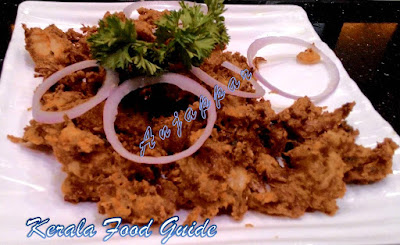







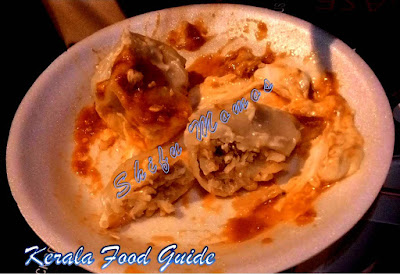




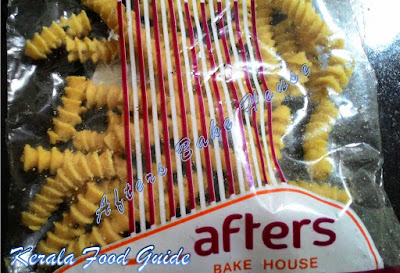
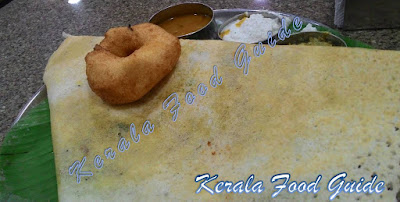

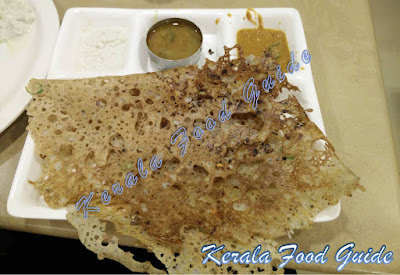
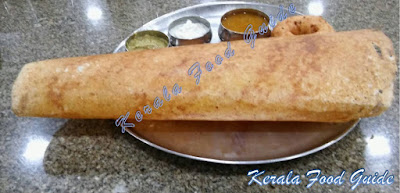



![Idiyappam [String Hoppers] Image of Idiyappam, also known as string hoppers.](https://blogger.googleusercontent.com/img/b/R29vZ2xl/AVvXsEhPC9ImwZ6CLWqQ-L8Wwbv-9288ak5reF5wuWjAe0X3xTgebxi7oFlhr31Nq3jKyjd_YkHGlD46_STorqVgZiEz3HEGCCR4hb2Ee4MAsKTgee1hxS-t4hF1I25QTAtD-R0Hf8lyl3TdLWqE/s400/Ceylon+Bake+House+Idiyappam+2+%255BString+Hoppers%255D.jpg)
![Idiyappam [string hoppers] Image of Idiyappam, also known as string hoppers.](https://blogger.googleusercontent.com/img/b/R29vZ2xl/AVvXsEj2i5DnKMTQzBrSYV87wIeNYoJ8nZ-7dm0suctgEZEUXYfLn5aE_UfEKAcGdm6HK1gHO7j7TUussfKnzMKHLGHSllbztyCG-S3LI28Lr97eTIfG50v2mMlt2Hxg4SMoqGKCKJQocu8wsP1p/s400/Ceylon+Bake+House+Idiyappam+%255BString+Hoppers%255D.jpg)
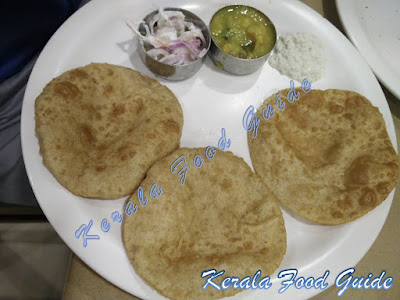
![Uzhunu Vada [Savoury Donut] Image of Uzhunu vada, type of savoury donut with chutneys and sambhar.](https://blogger.googleusercontent.com/img/b/R29vZ2xl/AVvXsEjzr07zgJ-AAKNAhd8c1C8X8zUWIP7LPi1AJuz7t1E1Ts4GpnbgXrSBzIsywkj0gn_FoloxJ1LkU-XmX0IvMfW2DQ5wiiIfyzbmeifCZu1otgQUBr7M2zJSDathVDwGkv8Pw-tyYdIfbAXy/s400/Brindhavan+Uzhunu+Vada.jpg)



